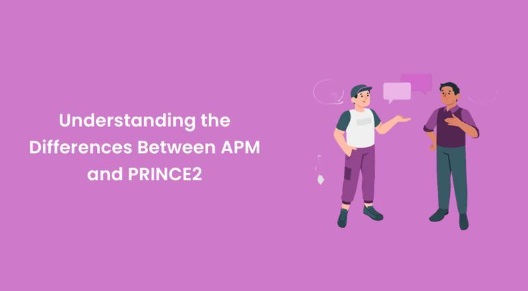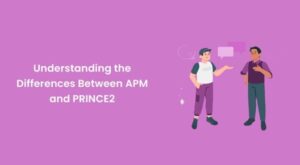In project management, several methods and frameworks are designed to ensure successful project execution. PRINCE2 (Projects IN Controlled Environments) and the Association for Project Management (APM) are well-known techniques that routinely make news. Even though both are well-recognised and widely used, their philosophies, structures, and uses are completely different. Enrol in the APM Course to enhance your project management skills.
In this blog article, we’ll discuss the major components of these two strategies to help you choose which to use for your projects. We’ll also compare the benefits and drawbacks of APM vs PRINCE2.
Table of content
-
- Understanding APM (Association for Project Management)
- Understanding PRINCE2 (Projects IN Controlled Environments)
- APM vs PRINCE2
- Methodology vs Professional Body
- Flexibility vs. Structure
- Emphasis on Soft Skills vs Emphasis on Documentation
- Continuous Improvement vs Controlled Environments
- Conclusion
Understanding APM (Association for Project Management)
A professional organisation that supports industry standards and best practices in project management is called the Association for Project Management (APM). The APM provides several certificates, with the APM Project Management Qualification (PMQ) being one of the most famous. This course equips participants with the thorough knowledge and abilities needed to successfully manage projects from beginning to end.
Project management using the APM methodology is process-oriented and emphasises important components, including risk management, stakeholder involvement, and project governance. It strongly emphasises flexibility and encourages project managers to customise their strategies to fit the particular needs of each project. APM focuses a lot of emphasis on soft skills because it understands how crucial good leadership, teamwork, and communication are to the success of a project.
APM’s adaptability is one of its main advantages. It is adaptable to diverse project kinds and industries, giving it a flexible option for project managers in various businesses. APM gives project managers diverse skills that empower them to overcome obstacles, adapt to change, and take the initiative in project execution.
APM encourages project managers to learn from their mistakes and use them to enhance current and future projects. This strategy encourages a culture of development and learning among the project management team, resulting in more streamlined procedures and better results.
Understanding PRINCE2 (Projects IN Controlled Environments)
On the other hand, PRINCE2 is a structured project management approach popular in both the public and commercial sectors, particularly in the UK. With its own set of guidelines, procedures, and themes, PRINCE2 is a particular project management framework as opposed to APM, a professional organisation that offers a variety of certifications.
A project is broken down into manageable stages by PRINCE2, each with clear roles, responsibilities, and goals. The technique gives project managers a precise road map, guaranteeing improved control and governance throughout the project. PRINCE2 is very helpful for big, complicated projects where a high level of organisation and coordination is required because of its systematic approach.
The PRINCE2 methodology also emphasises maintaining thorough records of project decisions and developments. Through this procedure, openness is guaranteed, and stakeholders are always aware of the project’s current progress. Additionally, PRINCE2 offers pre-made templates and instructions, easing project management procedures and lowering the possibility of mistakes.
APM vs PRINCE2
Below are some key differences between APM vs PRINCE2:
Methodology vs Professional Body
Project management experts can earn certificates and qualifications through the APM, a technique and a professional organisation. On the other hand, PRINCE2 does not have a professional membership organisation linked with it; it is only a project management approach.
Flexibility vs. Structure
The advantage of APM is its adaptability, which enables project managers to modify their strategy following the demands of a certain project. In contrast, the organised and well-defined framework provided by PRINCE2 is especially helpful for complicated projects that need stringent control and governance.
Emphasis on Soft Skills vs Emphasis on Documentation
APM strongly emphasises interpersonal and soft skills, understanding that strong teamwork and communication are essential for project success. Contrarily, PRINCE2 focuses on standardisation and documentation, ensuring that all project operations are well recorded and kept track of.
Continuous Improvement vs Controlled Environments
Project managers are encouraged by APM to adopt a culture of continuous improvement in which they draw lessons from past mistakes and apply them to new endeavours. Due to its rigid structure, PRINCE2 strongly emphasises retaining control and following predetermined procedures throughout the project.
Conclusion
Both APM and PRINCE2 are effective project management methodologies that can be tailored to specific project types and organisational requirements. While PRINCE2 offers a defined approach for efficient management and governance, the APM course gives project managers a broad skill set and emphasises adaptation.
The kind and complexity of your projects, your company’s culture, and your project management team’s skill sets should all be considered when choosing between APM and PRINCE2. Some businesses could even see the benefit of combining elements of the two techniques to develop a specialised strategy that best satisfies their particular needs.










